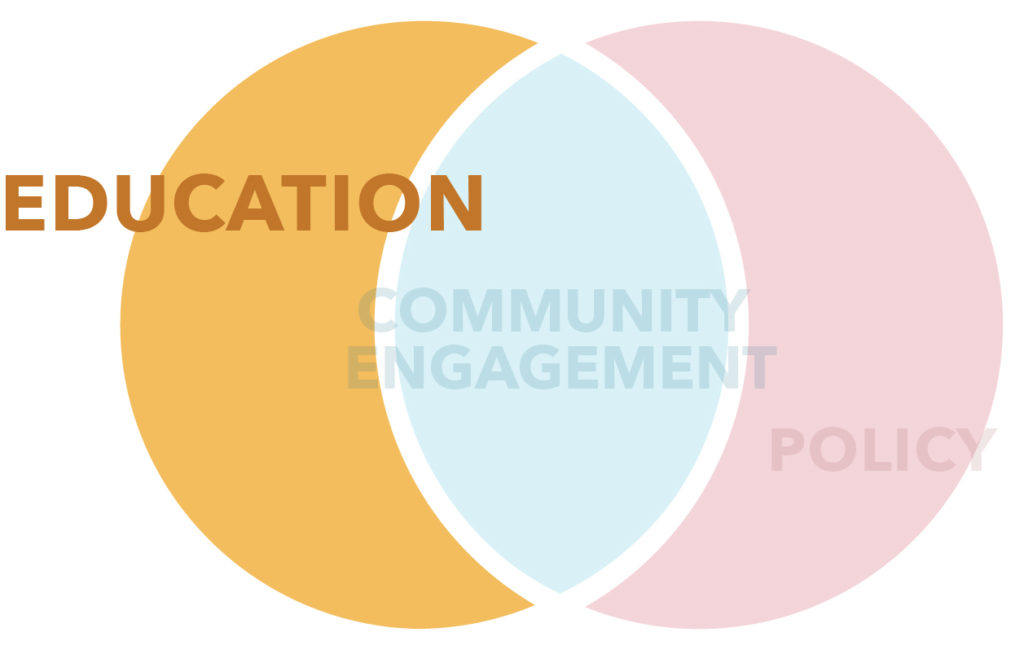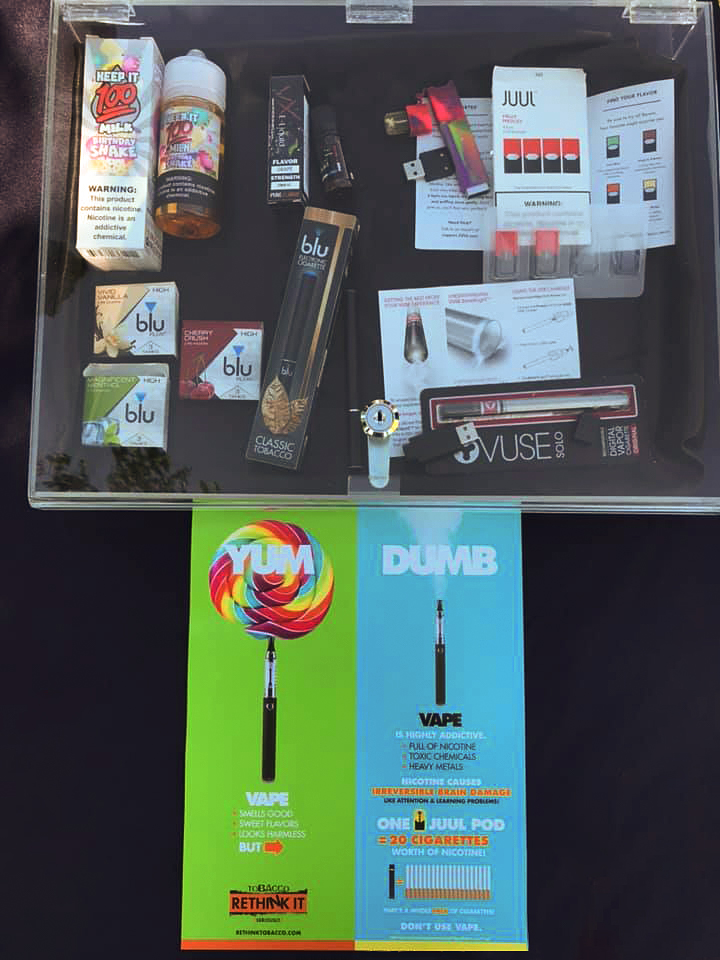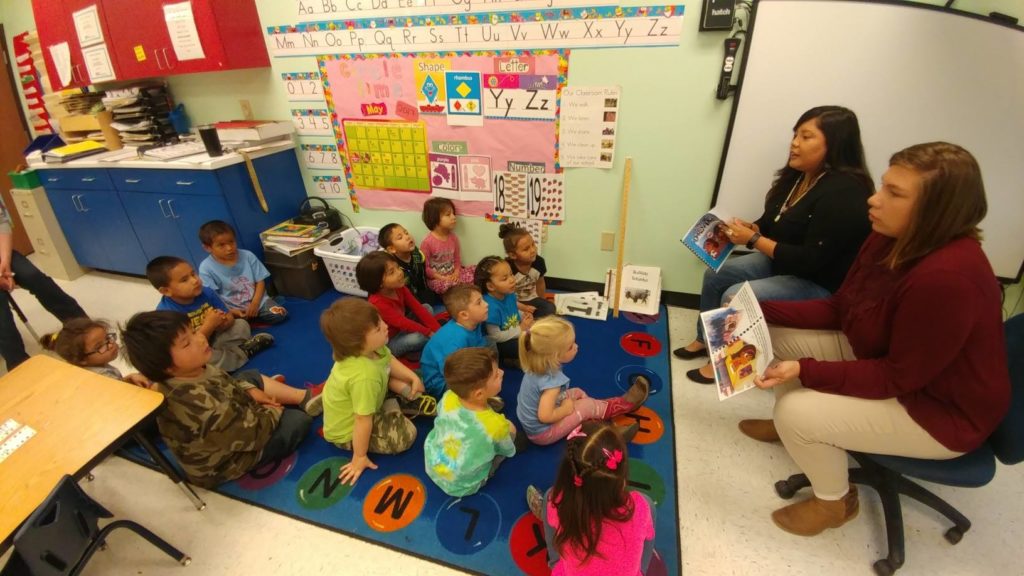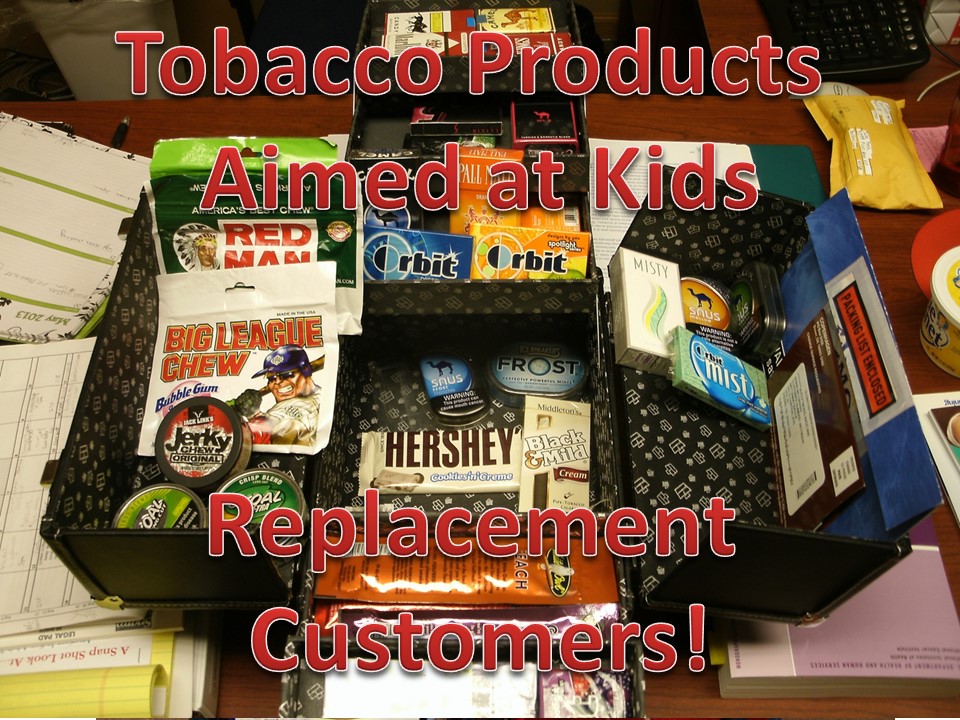Young people will respond more favorably to lessons from their peers and role models rather than adults. Similarly, young empowered volunteers can have a very powerful impact on adults who need education. Having a group of students savvy on your topic to help educate the community is very valuable. These young volunteers need an adult to be the leader to help guide the process, provide the tobacco facts and supplies, and ensure that any problems that arise are solved. As the community becomes more knowledgeable about your topic, they will develop their own reason to care and invest in the issue.
If you are unable to work with students in-person due to COVID-19 precautions, scroll down to “Resources” for virtual lessons designed for educators to use on their own.

Planning
- Talk to school administrators to see if it is possible get a group of middle and high school students together to train who will serve as teen leaders to help educate their peers.
- An advisor for this group who works in the school is very helpful.
- Recruit young people who may be interested in educating peers.
- Train your youth volunteers so they feel knowledgeable and passionate about the subject matter.
- Teens Against Tobacco Use (TATU) is a school-based program for teens to learn about tobacco so they can educate their peers. The South Dakota Department of Health Tobacco Control Program offers free TATU training to schools and mini grants to fund tobacco activities.
- Campaign for Tobacco Free Kids has a Taking Down Tobacco Training Program that teaches youth advocacy.
- 1 month before—Schedule and organize an educational presentation with school administration. Decide together which ages/grades presentations will be for, type of presentation needed, date/time for presentation, and answer other questions either of you may have.
- Event booth—Design a table with visuals aids and educational handouts to set up at a basketball game, parent-teacher conferences, etc.
- Classroom (15-30 students)
- Video or book discussion—Choose an educational video, prepare questions to pause, and discuss throughout.
- Curriculum lesson—Choose a lesson from a curriculum and follow the guidance.
- Design your own lesson using credible and up-to-date sources and visual aids.
- Health fair (plan for 5-10 students per booth; e.g. if you have 6 booths you can accommodate 30-60 students at a time).
- Break up subjects relevant to your topic and prepare a visual aid and talking points for volunteers to speak from.
- Assembly (60-100 students).
- Create a skit or an activity suitable for a large group. Think about room acoustics and consider a PA system.
- Prepare and/or order any supplies needed for presentation.
- 1 week before—Follow-up with the school to make sure everything is coordinated with the students receiving the presentation and your volunteer students.
- 1 week before and day of—Prepare student volunteers and have a practice round to work the kinks out and to help your volunteer students feel comfortable with the material they are presenting.
- Present! Be prepared to step in to help if volunteers are asked a tough question or the audience gets rowdy.
Resources
- Youth vaping lesson plan & video on peer pressure
- Youth vaping lesson plan & video on e-cigarette facts
- CRST TATU student’s video on the impact they’ve made on tribal youth in their community
- Tobacco Control and Prevention Program resources from the SD Department of Health
Follow-up
- What feedback did you get from administrators, teachers, students, or parents? What went well? If changes are needed how can you use feedback to make improvements?
What if?
Student volunteers feel unprepared or nervous.
- Spend more time practicing and preparing.
- As the adult with the volunteers, consider introducing the topic and setting the stage at the start of the presentation then turning it over to the youth volunteers. You also may need to assist with or lead the closing. Helping with the intro and closing can help volunteers feel more comfortable and able to present their part.
- Consider if a different activity would be a better fit for your volunteers. Large audiences are much more intimidating than small groups.
- Reschedule. It’s better to reschedule an event than to put unprepared volunteers on the spot.
You don’t have the means to coordinate peer to peer presentations.
- Support teachers to educate their students on your topic.
- Encourage teachers to work together on an interdisciplinary project (e.g. History teachers help students research the history of the topic. English teacher has students write an essay on the topic. Computer teacher works with students to turn their essay into a short video.)
- If you have lesson plans, educational videos, or visual aids that can be borrowed, send an email at the beginning of each year to teachers so they know what’s available.
Hints
- Student councils, gifted and talented programs, or improv and theater clubs are a good place to start when looking to recruit your youth educators.
- If your local high school isn’t interested, seek out college students who are looking to build their resume or get volunteer hours.
- Make sure your youth volunteers are credible. We require our TATU members to sign a “tobacco-free” pledge. By doing this, the tobacco users usually excuse themselves from volunteering.
- If you’re unsure about the appropriate grade level for your presentation, get advice from grade-level teachers.
- Be cautious not to scare young students about health dangers, but teach them skills to advocate for themselves in a respectful way.
- If you collect something shareable from students, like art, a quote, or photo, send a passive media release form home so parents have the opportunity to decline.
- If the school requires a permission form for students to attend your presentation, see the Parent/Guardian Opt-Out Form.
Čaŋlí Coalition Example

To include cultural lifeways, we… made our own lessons and visual aids on Ċanśaśa, the Lakota’s traditional tobacco, to honor and respect the cultural ways of our local population. To reach school-age kids during COVID, we created an educational video on vaping with a local teen and parent.


